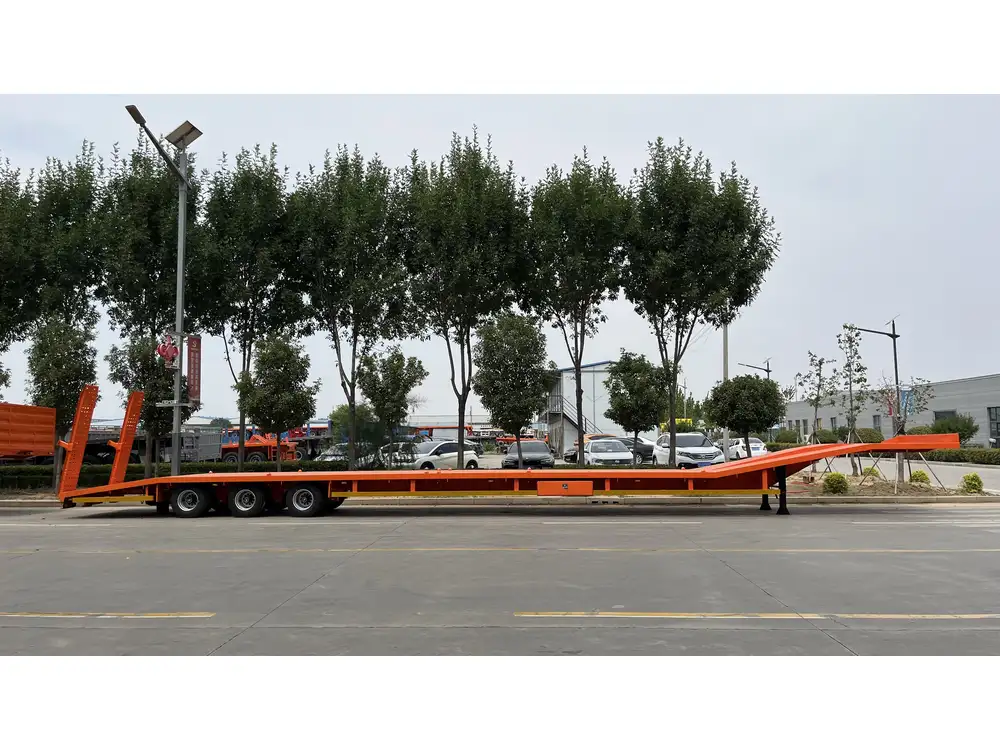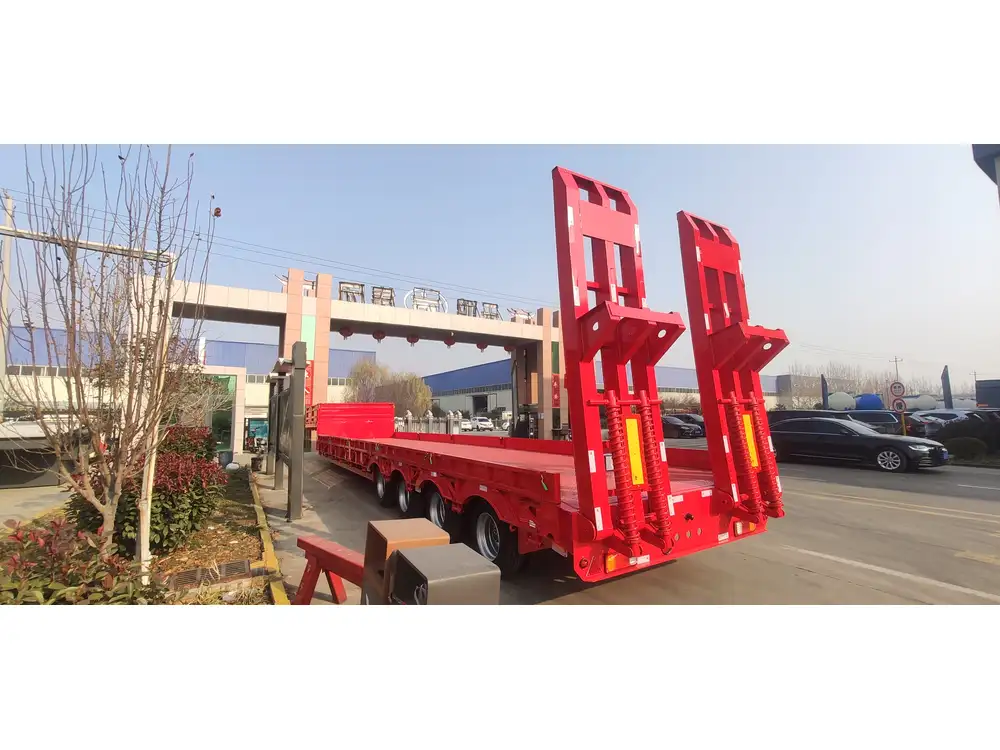Registering a flatbed trailer in Hawaii involves a myriad of steps that vary by county and depend on specific factors, such as the type of trailer, weight, and intended use. Understanding the complete registration process is crucial for ensuring compliance with local regulations and avoiding unexpected fees. In this detailed guide, we will explore every aspect of registering a flatbed trailer in Hawaii, emphasizing costs, documents required, and tips for a smooth registration experience.
Understanding the Basics of Flatbed Trailers
Before diving into the registration process, it is essential to understand what constitutes a flatbed trailer. Flatbed trailers are designed with a flat load-carrying surface and no sides or roof, making them versatile for transporting a range of goods, including machinery, construction materials, and furniture. Their open design allows for easy loading and unloading, particularly for oversized or unconventional items.
Types of Flatbed Trailers
Below is a brief overview of common types of flatbed trailers:
| Type | Description |
|---|---|
| Standard Flatbed | Regular flatbeds often used for general transport. |
| Step-Deck | Features a lower deck for transporting taller loads. |
| Double Drop | Allows for extra height clearance with a lowered center section. |
| Lowboy | Designed for heavy, low-profile loads like construction equipment. |
| Removable Deck | Flatbed with removable sections ideal for varying cargo sizes. |
Understanding these distinctions can help determine the most suitable trailer type for your needs, as well as potential implications for registration.

Costs Associated with Trailer Registration in Hawaii
Registration Fees
When registering your flatbed trailer in Hawaii, be prepared for several fees. Although costs can vary by county, here is a general breakdown:
- Base Registration Fee: Typically ranges from $15 to $30, depending on the trailer’s weight.
- Weight Fees: Additional charges apply for trailers over a specific weight. Expect fees around $6 per 1,000 pounds.
- Use Tax: Based on the trailer’s purchase price, varying by county.
- Local Taxes: State and county taxes that can range from 4% to 4.5% on the purchase price (applicable if purchased out of state).
Estimated Total Registration Costs
For a more precise understanding, let’s look at the estimated total registration costs in a structured list format. Suppose you have a flatbed trailer weighing 3,000 lbs and purchased it for $5,000.
| Cost Component | Estimated Cost |
|---|---|
| Base Registration Fee | $20 |
| Weight Fee ($6 per 1,000 lbs) | $18 (for 3,000 lbs) |
| Use Tax (4% of purchase price) | $200 |
| Local Taxes (4.5% of purchase price) | $225 |
| Total Estimated Cost | $463 |
These figures are estimates and can vary. Always confirm with the local Department of Motor Vehicles (DMV) for the most accurate information.

Necessary Documents for Registration
To complete the registration process, there are several key documents required:
Proof of Ownership:
- Bill of Sale or Manufacturer’s Certificate of Origin
- Title if the trailer was previously registered
Identification:
- A valid driver’s license or state ID
Insurance Documents:
- Proof of insurance covering the flatbed trailer
Completed Application Form:
- Hawaii DMV or local county application form for trailer registration
Payment:
- All applicable fees must be paid at the time of registration.
Preparation Steps Before Visiting the DMV
Before heading to the DMV, ensure that:
- All documents are organized and easily accessible.
- You verify the office hours and whether appointments are required.
- You check if there are additional requirements specific to your county by visiting the Hawaii DMV website.
The Registration Process Step by Step
The following is a concise step-by-step guide to registering your flatbed trailer in Hawaii:

Step 1: Gather Required Documents
Collect all necessary documentation as mentioned above. Ensure each document is complete and has its corresponding copies, if required.
Step 2: Determine the Appropriate DMV Location
Research the nearest DMV office that handles trailer registrations and ascertain if they require an appointment.
Step 3: Visit the DMV
Present your documents at the DMV. There might be a short wait depending on the day and time. Ensure that all fees are prepared, as well as a method of payment (check, credit card, or cash).

Step 4: Complete the Registration Process
Fill out the application form. The DMV agent will review your documents and may ask for additional information. Once approved, they will issue your registration and license plates.
Step 5: Pay the Fees
Submit your payment for the registration fees. Keep the receipt as proof of registration.
Step 6: Obtain Your Registration Certificate and License Plate
Once the payment is processed, you will receive your registration certificate and license plate. Ensure to attach the plate properly to your trailer according to state laws.

Common Challenges and Solutions
Navigating the registration landscape can present challenges. Here are common issues that users may face along with solutions:
Challenge: Missing or Incomplete Documents
Solution: Double-check your documents before your visit. Create a checklist of everything required, and if you discover something missing, gather those items before attempting to register again.
Challenge: Unexpected Fees
Solution: Research beforehand to understand potential fees. Utilize the DMV website or contact them directly for clarity on the associated costs.

Challenge: Long Wait Times at the DMV
Solution: If appointments are not mandatory, choose less busy times (mid-morning or mid-afternoon typically work better). Consider visiting once a week, avoiding the end of the month when many users are registering.
Key Considerations for Trailer Owners
Once your flatbed trailer is registered, several ongoing responsibilities must be acknowledged:
Maintenance and Safety Inspections
Always ensure your trailer is well-maintained and complies with safety regulations to avoid accidents and legal issues. Regular inspections can help identify potential problems before they become hazardous.

Renewal of Registration
In Hawaii, trailer registrations must typically be renewed annually. Make sure to mark your calendar ahead of the renewal date to avoid penalties for late registration.
Insurance Requirements
It is crucial to maintain an active insurance policy on your flatbed trailer, as this not only protects you financially but is often mandated by law.
Conclusion
Registering a flatbed trailer in Hawaii involves understanding the specific processes, associated costs, required documents, and potential challenges. Through careful preparation and awareness, whether you’re hauling loads for business or personal use, you can navigate the registration successfully and abide by state regulations.
For further assistance, consider reaching out to the local DMV or consulting with fellow trailer owners who have undergone the recent registration process. Staying informed can save you both time and money, ensuring a seamless registration experience.
By following the guidance provided in this article, you should be well equipped to tackle the registration of your flatbed trailer in Hawaii efficiently.



